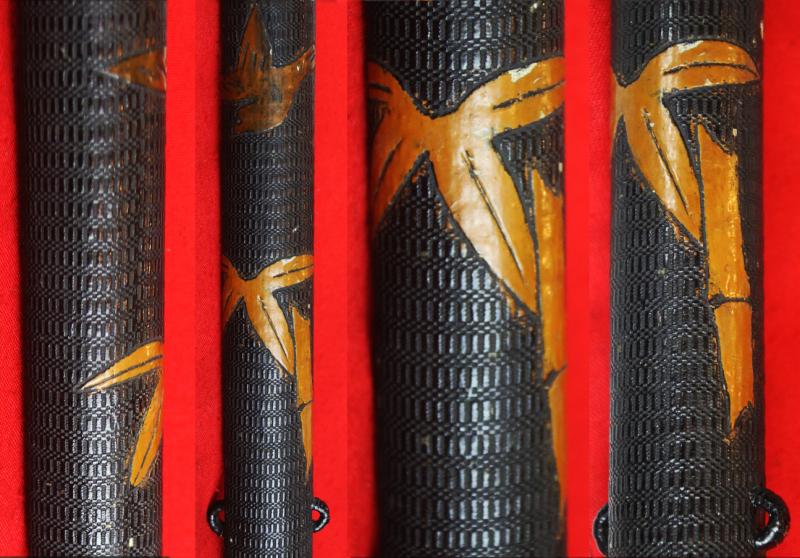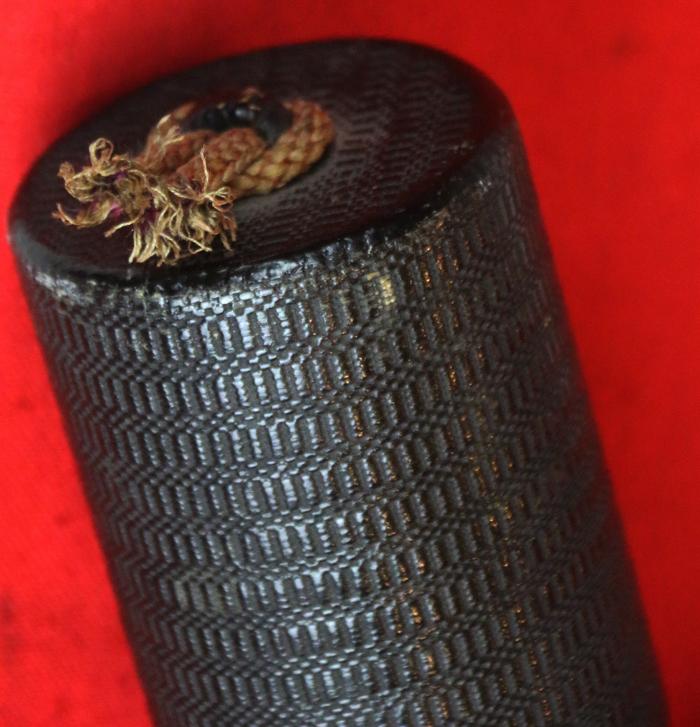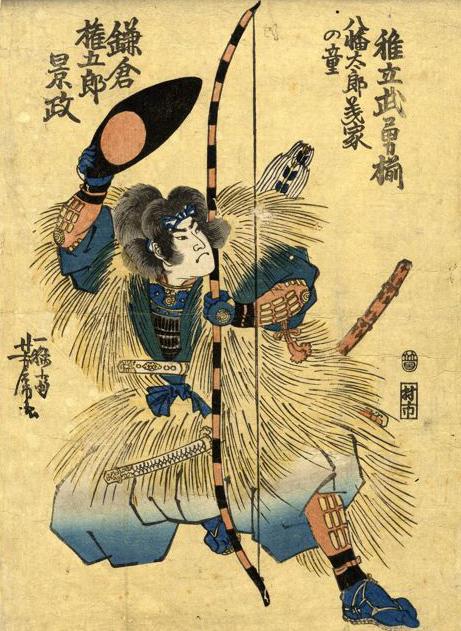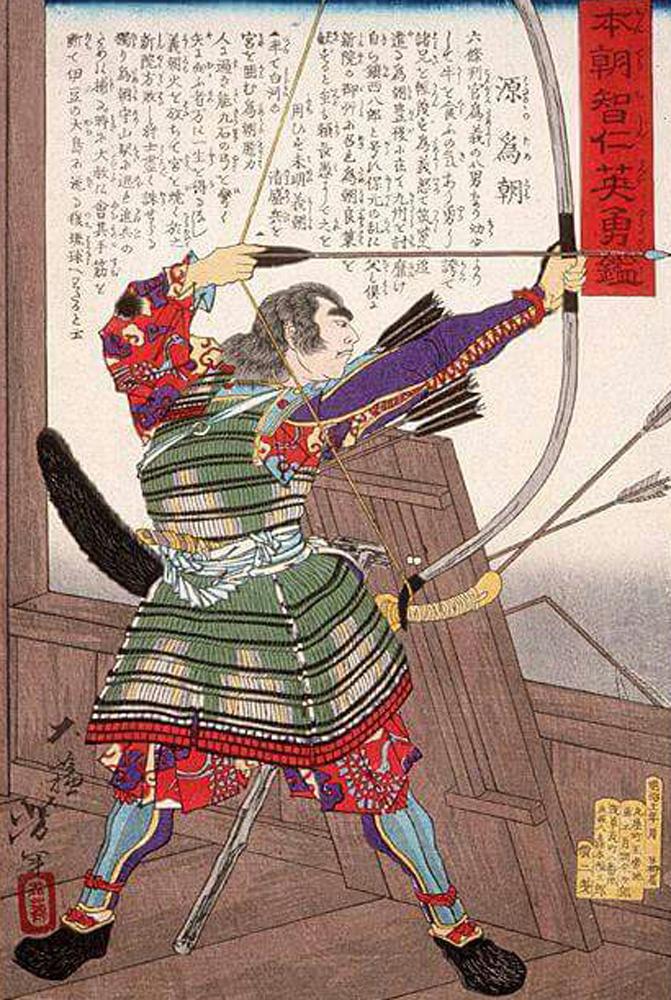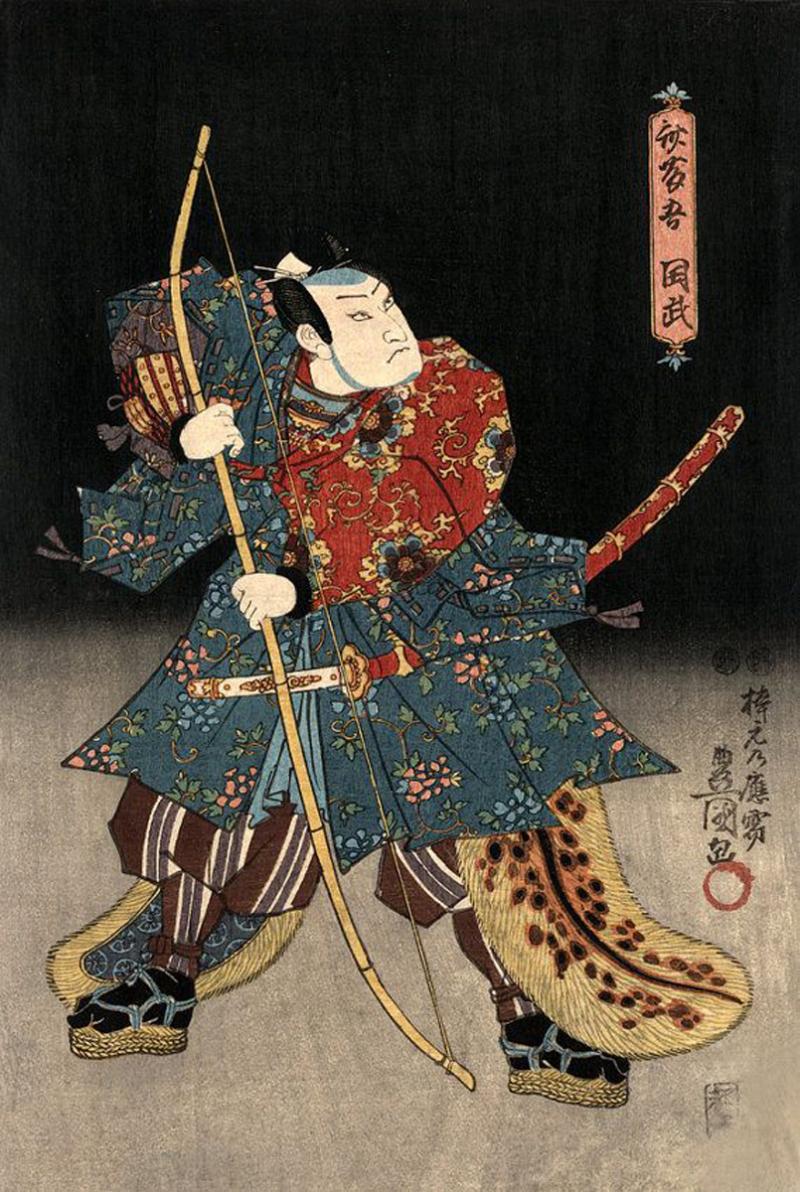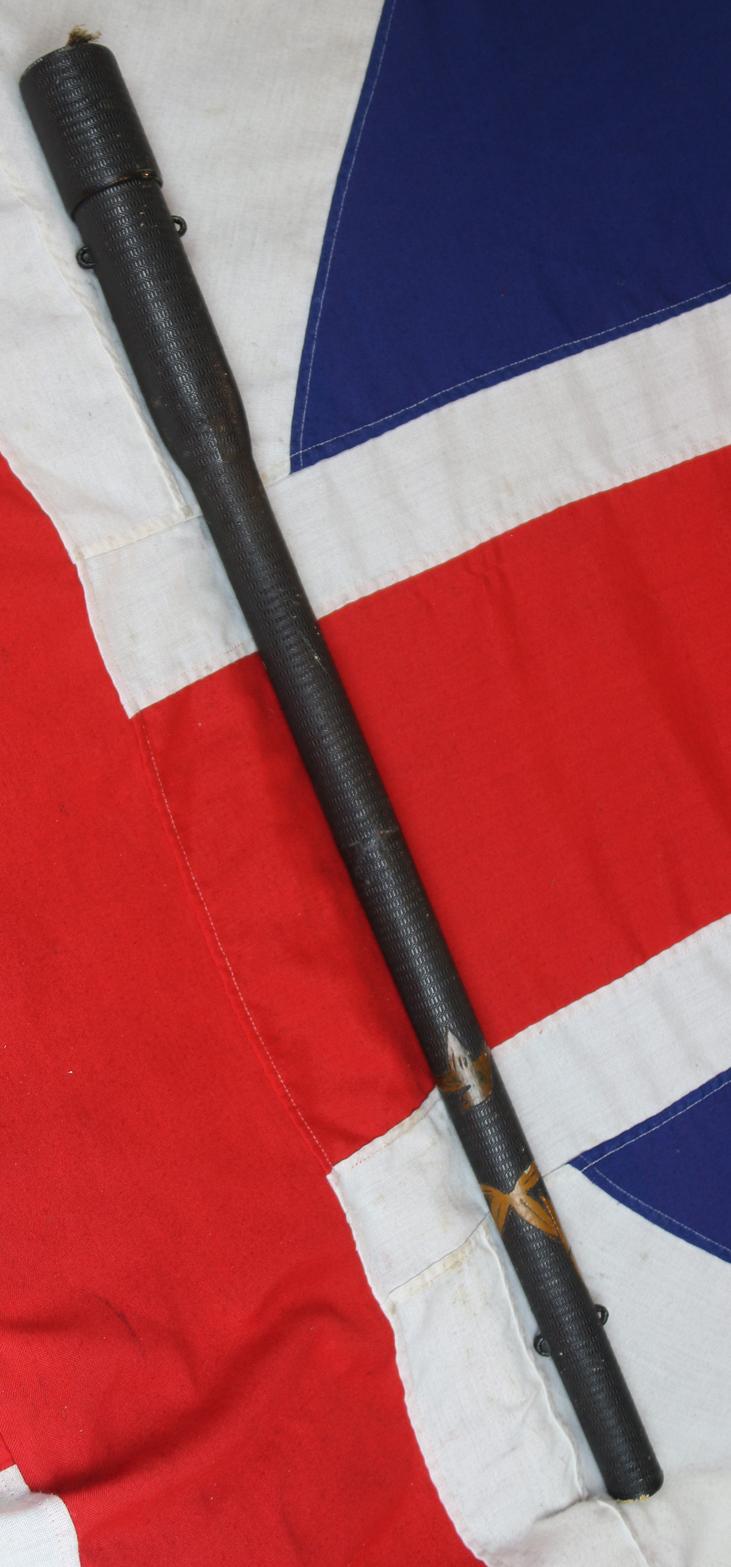An Original Edo Period Samurai Yabira Yadzutsu with Ya. A Samurai Bowman's Quiver and Single Arrow with Sea Eagle Feathers.
The wood body with basket weave lacquer sparsely decorated with bamboo in gold lacquer,
As early as the 4th century archery contests were being held in Japan. In the Heian period (between the 8th and 12th centuries) archery competitions on horseback were very popular and during this time training in archery was developed. Archers had to loose their arrows against static and mobile targets both on foot and on horseback. The static targets were the large kind or o-mato and was set at thirty-three bow lengths and measured about 180cm in diameter; the deer target or kusajishi consisted of a deer's silhouette and was covered in deer skin and marks indicated vital areas on the body; and finally there was the round target or marumono which was essentially a round board, stuffed and enveloped in strong animal skin. To make things more interesting for the archer these targets would be hung from poles and set in motion so that they would provide much harder targets to hit. Throughout feudal Japan indoor and outdoor archery ranges could be found in the houses of every major samurai clan. Bow and arrow and straw targets were common sights as were the beautiful cases which held the arrows and the likewise ornate stands which contained the bow. These items were prominent features in the houses of samurai. The typical longbow, or war bow (daikyu), was made from deciduous wood faced with bamboo and was reinforced with a binding of rattan to further strengthen the composite weapon together. To waterproof it the shaft was lacquered, and was bent in the shape of a double curve. The bowstring was made from a fibrous substance originating from plants (usually hemp or ramie) and was coated with wax to give a hard smooth surface and in some cases it was necessary for two people to string the bow. Bowstrings were often made by skilled specialists and came in varying qualities from hard strings to the soft and elastic bowstrings used for hunting; silk was also available but this was only used for ceremonial bows. Other types of bows existed. There was the short bow, one used for battle called the hankyu, one used for amusement called the yokyu, and one used for hunting called the suzume-yumi. There was also the maru-ki or roundwood bow, the shige-no-yumi or bow wound round with rattan, and the hoko-yumi or the Tartar-shaped bow. Every Samurai was expected to be an expert in the skill of archery, and it presented the various elements, essence and the representation of the Samurai's numerous skills, for hunting, combat, sport and amusement, and all inextricably linked together. The Hama Yumi is a sacred bow used in 1103 C.E. in Japan. The Bow is said to be one of the oldest and most sacred Japanese weapons; the first Emperor Jimmu is always depicted carrying a bow.
According to legend, at that time, the Imperial Palace was taken over by an evil demon, which caused the Emperor to fall ill with great anxiety and suffering. When the Imperial High Priests tried and failed in their efforts to destroy the demon and dispel the Imperial household of its influence, they were at a loss. Finally, an archer, Yorimasu Minamoto, was summoned to the Imperial Palace in the hopes of slaying the demon with his bow and arrow, ridding the palace of this plague. With a steady hand and a virtuous heart, Yorimasu Minamoto vanquished the demon with the first arrow, and his bow was declared to be a Hama Yumi; an "Evil-Destroying Bow", (and the first arrow a Hama Ya; a "Evil-Destroying Arrow"). Overall 37.5 inches long
Code: 24185


